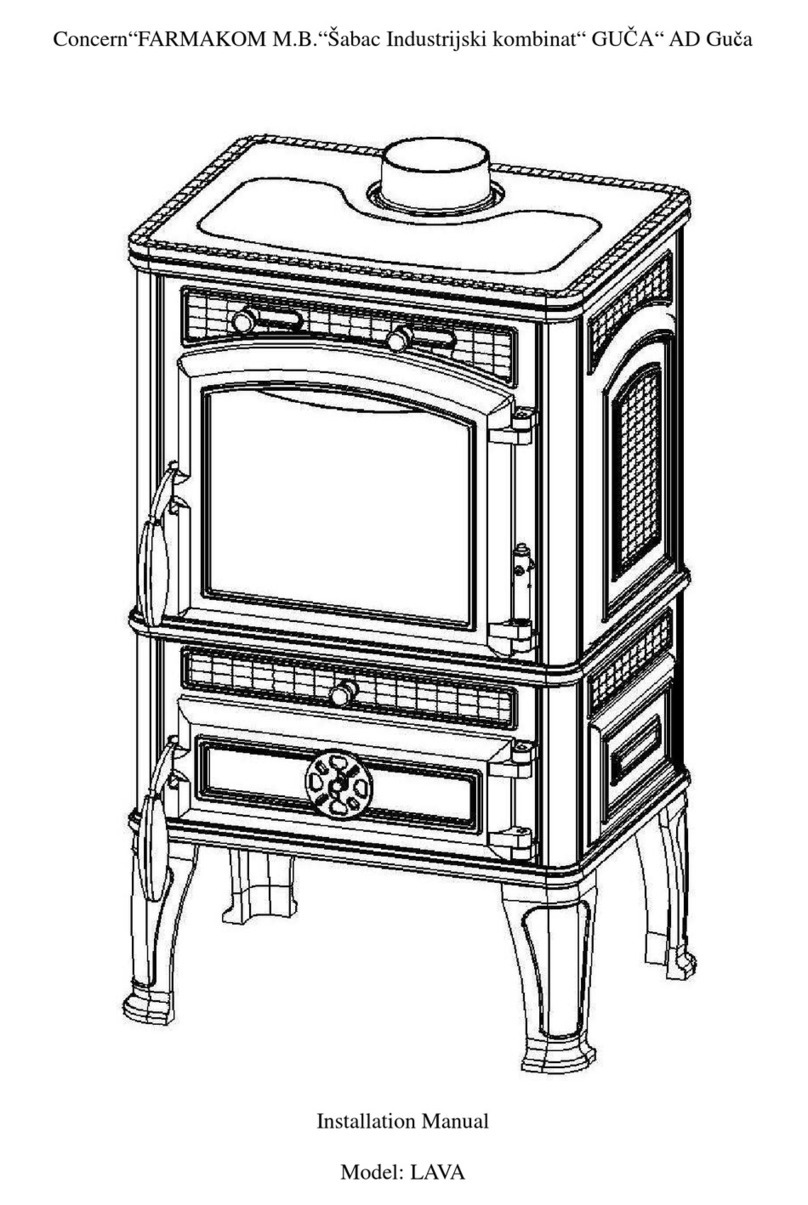
1. INTRODUCTORY NOTES
Read the instructions carefully and follow the rules and recommendations.
Hereinafteryou willndthe dataregardingthestoveitself,as wellas therecommendations
for the installation and maintenance of the stove.
The eciency of a stove depends on its correct installation, which must be carried
out by a professional following the highest standards and the safety regulations in force.
The place you intend to install the stove must have sucient airspace and the oor
and surrounding object must be made of a non-ammable material.
Pay attention to the bearing capacity of the oor. In case that the oor cannot endure
the weight of the stove, it is necessary to reinforce it or set additional girders respecting
advices of experts. Moreover, if there is a ammable oor, it must be protected by an
insulating plate (steel, brass, marble, stone, etc.), which extends at least 50 cm from the
front and at least 15 cm from the sides.
Do not place armchairs, seats, curtains or any other ammable objects unmentioned
here within 100 cm from the stove, as well as within 70 cm on the sides, and 40 cm from
the back side.
The cast iron parts are protected by heat resistant paint and during the rst few
exploitations smoke and smells which are products of paint stabilization occur. The room
has to be properly ventilated. Avoid the presence of children, pregnant women, and
persons with breathing problems during the rst few lightings of the stove.
The stove is to work with the doors closed. Open the door only in the case of fuel
addition. Open the door slowly in order to equalize the pressure. Abrupt door opening
can cause smoke suppression. Add fuel only when ember is created and when there is no
intense ame.
Avoid using the stove under circumstances of unfavorable weather conditions and
strong wind.
The stove is heated during operation, so take the necessary measures of precaution.
The door handle is heated during operation so use a glove when opening the door. Do not
touch hot parts of the stove (above all cast parts, plate, and visible brass parts).
Children should not be allowed to play near the stove or handle it.
When lling the system with liquid, make sure that there is no air left. Do not use the
stove without liquid in the system.
Provide continuous ow of fresh air into the room where the stove is installed
because combustion uses the oxygen from the room.
Do not allow overheating of the stove parts because the stove will not be safe then
and its exploitation duration will be shortened.
Donotusethestoveforthecombustionofwaste,inappropriateandunrecommended
fuels.
Parts of packing should be properly disposed. Elements from cardbox, wood or
plastic which are entered into the furnace space should be taken out before putting the
stove into operation. Be careful when taking out the packaging because wooden bars are
connected with nails.




























